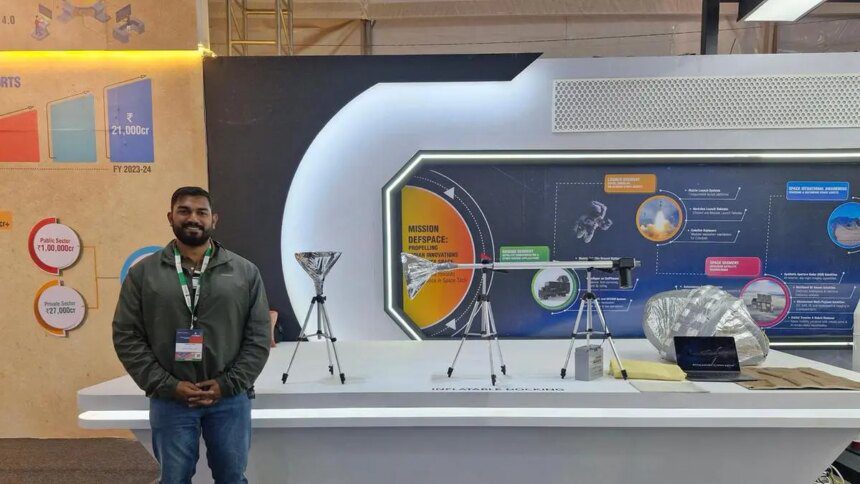COSMIC PIN CODE: Siddharth Jena, Founder-CEO, Akashalabdhi
As the global space-tech market anticipated to reach $769.7 billion by 2030, per Grand View Research, both space agencies and private companies are developing plans for permanent off-Earth habitats. The Indian Space Research Organisation (ISRO) is currently working on habitat modules for its space station, while NASA is investing in commercial space habitat technologies. Within this context, Indian firm Akashalabdhi is charting an independent course.
Founder and CEO Siddharth Jena articulates the company’s vision succinctly: “We position ourselves as a space real estate and infrastructure company.”
Innovative Structures
Existing space stations, such as the International Space Station (ISS), present substantial construction costs and typically require multiple launches over extended periods for assembly.
In contrast, Akashalabdhi is developing lightweight space structures made from soft composites and fabric, capable of deployment in a single mission and inflation in orbit or on other celestial surfaces.
These are more than just makeshift tents in space; they are intended to address a critical issue: storage. As space economies evolve—tapping into asteroid mining, facilitating manufacturing in zero gravity, and establishing lunar bases—effective logistics will become pivotal. India’s upcoming lunar mission aims to send a robotic explorer to the moon’s south pole by 2028, necessitating storage for its equipment. The costly task of sending supplies from Earth emphasizes the significance of developing infrastructure in space.
Origins of Innovation
Jena’s interest in space infrastructure took root during his engineering studies at IIT Roorkee, where he contributed to a project involving inflatable solar arrays for ISRO missions, including the creation of reflectors for the Mars Orbiter Mission.
While pursuing his master’s and PhD, Jena specialized in inflatable space habitats. Although NASA’s work on similar concepts dates back decades, advancements in technology have only recently made such designs commercially feasible. Innovations in machine learning now enable engineers to create composite materials that provide radiation shielding, thermal insulation, environmental control, and debris protection in space.
Operating out of the Indian Institute of Science, Bengaluru, Akashalabdhi constructs and tests its inflatable space structures with in-house equipment.
Financial Backing
The startup has attracted funding through grants from the IDEX challenge, tested its prototypes at DRDO laboratories, and partnered with the Indian Air Force and Indian Army for pilot projects. Additionally, it has supplied components to Bharat Electronics, reporting an order book of ₹3 crore and executing projects valued at ₹50 lakh so far.
A significant milestone is planned for July next year, with the launch of a 70-cubic-meter inflatable structure designed to support four clients, including two international entities. These missions will focus on microgravity drug development, orbital data center testing, in-space manufacturing, and experiments conducted by IISc.
Akashalabdhi has concluded a $1.2 million pre-seed funding round and is establishing a test facility in the Hagerbach Test Gallery in Switzerland.
Looking Ahead
“Humanity is always a courageous species,” Jena reflects. “We want to play our role as infrastructure providers for human expansion in space.”
As collective efforts intensify to explore Mars and mine extraterrestrial resources, the next prospective real estate boom may unfold 400 kilometers above Earth.
More Like This
Published on November 10, 2025










